The world's oldest culture is not where you'd expect
Australia's cultural riches
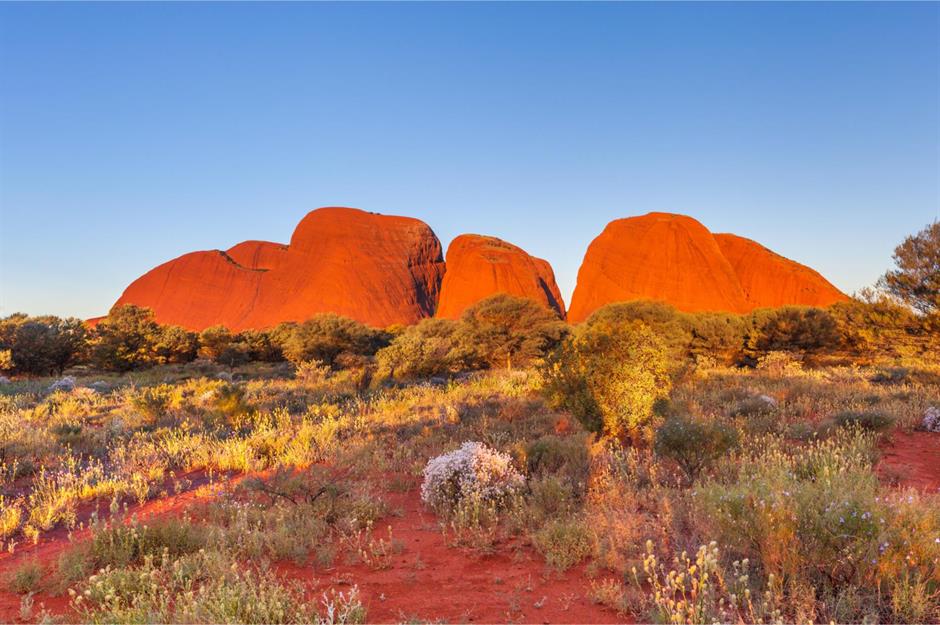
In 2016, a DNA study confirmed that Aboriginal Australians are the oldest continuous culture on Earth, dating back 50,000 years. Scientists working on the study established that these "first real human explorers" originally migrated from the African continent, and were probably the first humans to cross an ocean. While Australia's First Peoples have suffered since the arrival of non-Aboriginals in the 17th century (and onwards), there’s still a vast quantity of sacred ancient sites which continue to serve Aboriginal and Torres Strait Islander communities today. From hand-printed rock art to modern-day cultural festivals, we take a look at the most incredible ones.
Kimberley, Western Australia
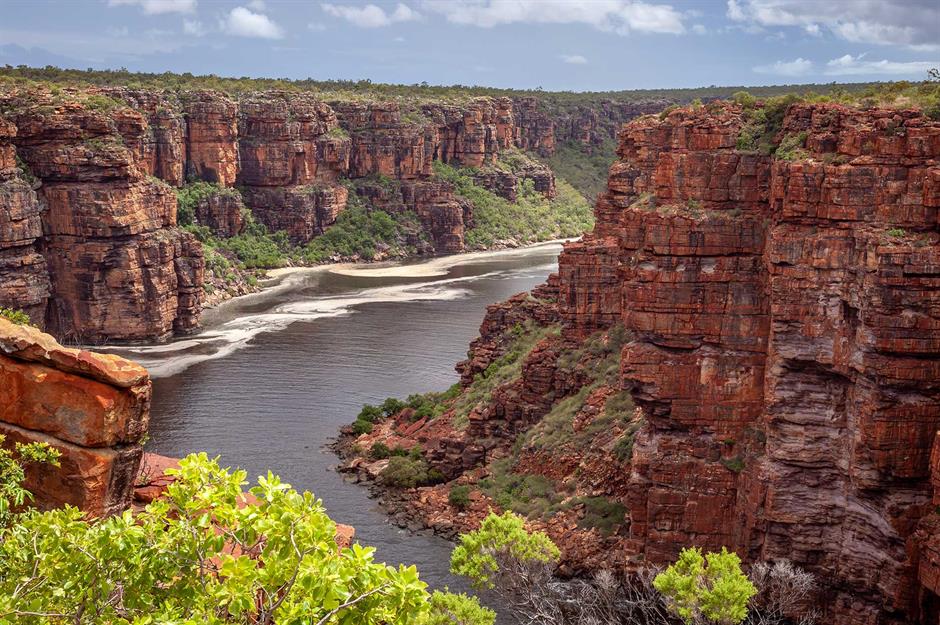
The remote, sparse landscape of Kimberley has a phenomenally impressive history: in 2022, scientists discovered a 380-million-year-old Gogo fish fossil which contained the world’s oldest fossilised heart. Aboriginal peoples have lived in this coastal region for some 40,000 years, and once used double-log rafts to navigate Western Australia's offshore islands. Kimberley’s ancient rock art is also interesting, as it depicts creator beings that are central to the Wanjina-Wunggurr way of life, and forms one of the longest sequences of rock art in the world.
Lake Mungo, New South Wales
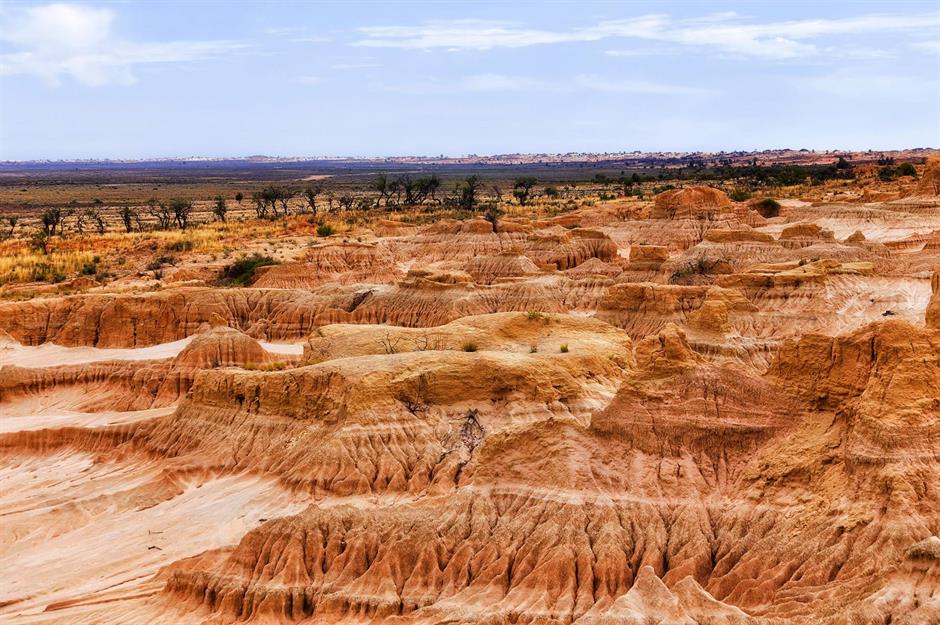
The oldest human remains found in Australia (among the oldest found in the world) were revealed in the dried-up Lake Mungo. In 1964, the remains of Mungo Lady were discovered: a woman who lived 40-42,000 years ago and was ritually cremated by her people. Then, in 1978, a man from the same era was also unearthed – he had been ceremonially buried and covered with red ochre (clay pigment). The pair comprise the world's oldest evidence of ritual burial. In April 2022, it was controversially announced that their remains would be reburied without a commemoration and not in a publically-known place, which many elders say goes against the wishes of previous generations.
Karlu Karlu, Northern Territory
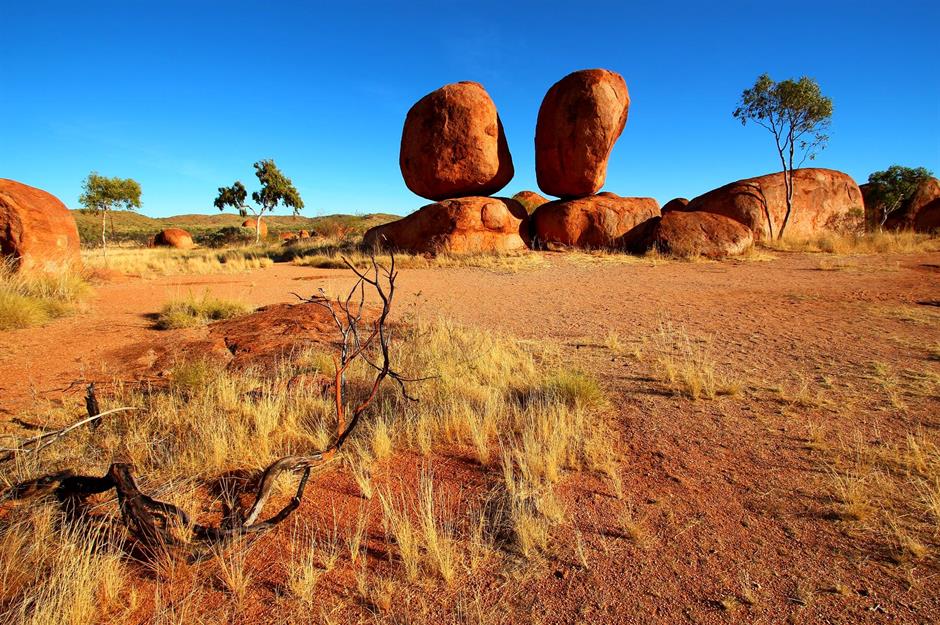
Some 59 miles (95km) south of Tennant Creek stand the gravity-defying Karlu Karlu (or Devil’s Marbles). The Warumungu people are the traditional owners, and visitors can take a short self-guided walking trail, reading the helpful information boards along the walkways. Karlu Karlu was formed over millions of years and, as it's still prone to cracks and erosion, the site is still constantly evolving.
Love this? Follow our Facebook page for more travel inspiration
Nitmiluk National Park, Northern Australia

A cluster of 13 gorges form the Nitmiluk (formerly the Katherine) Gorge system in this sprawling national park, located on the lands of the Jawoyn people. Whether you choose to visit for the day, camp or even fly over the gorge on a private helicopter tour, you can marvel at the rock art dotted around the park. Dating as far back as 40,000 years, the paintings depict the mythical figure of ‘Bula’ (the Creator) who according to oral histories travelled this land. The rock art also tells other stories of the Jawoyn people.
Oodnadatta Track, South Australia

Running north to south, the Oodnadatta Track followed a traditional Arabunna trading route, but, following the arrival of Europeans, was used by the Overland Telegraph Line and the railway to Alice Springs. Today it's a popular outback driving route, with the unmissable Pink Roadhouse motel and restaurant, plus a small museum with a local railway and Aboriginal artefacts on display.
Walga Rock, Western Australia
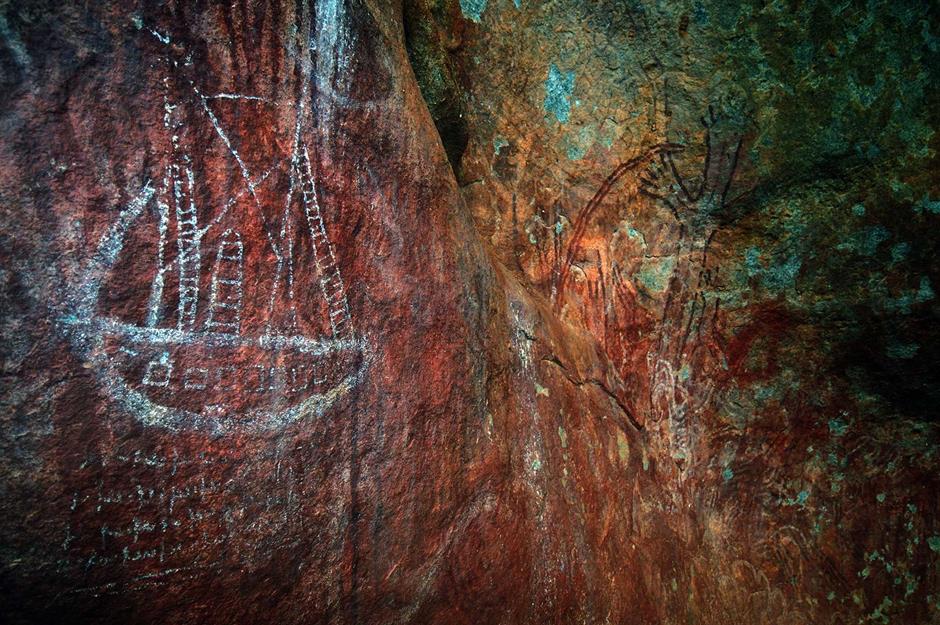
Some 30 miles (48km) west of the little town of Cue lies Walga Rock, a significant cultural and spiritual site for the Wajarri people. Beneath the huge granite monolith is a natural cave containing 10,000-year-old rock art; venture inside to marvel at thousands of Wajarri motifs depicting handprints, animals and creation stories. One particular painting of a white vessel is thought to resemble a European ship, but experts can't explain the oddly linear etchings beneath it – are they simply ocean waves, or could it be an Arabic script?
Lake Ballard, Western Australia

Sacred to the Wongi (or Wangkatha) peoples, Lake Ballard is a vast salt lake with strong connections to an often-recited story. The tale explains how seven sisters were playing on the lake when a lusty old man approached and chased them, causing them to hide. The landscape’s unusual features are said to represent the sisters playing, being chased and hiding. Today, Lake Ballard is the site of Earth’s largest outdoor art installation, a 3.9-square-mile (10sq km) exhibit called Inside Australia (pictured) by Antony Gormley.
The Tarkine, Tasmania

The Tarkine isn’t just Australia’s largest temperate rainforest, it’s also an ancient remnant of supercontinent Gondwana. This wilderness is a tangle of unique wildlife, moss-clad trees and roaring rivers, and boasts the 40,000-year-old heritage of the Tarkiner people who lived in northwest Tasmania before European colonisation. Today, the Tarkine is home to one of the greatest concentrations of Aboriginal sites in Australia, with significant archaeological finds including stone tools, campfire sites and massive shell middens (piles of shells discarded after the seafood inside had been eaten).
Uluru, Northern Territory
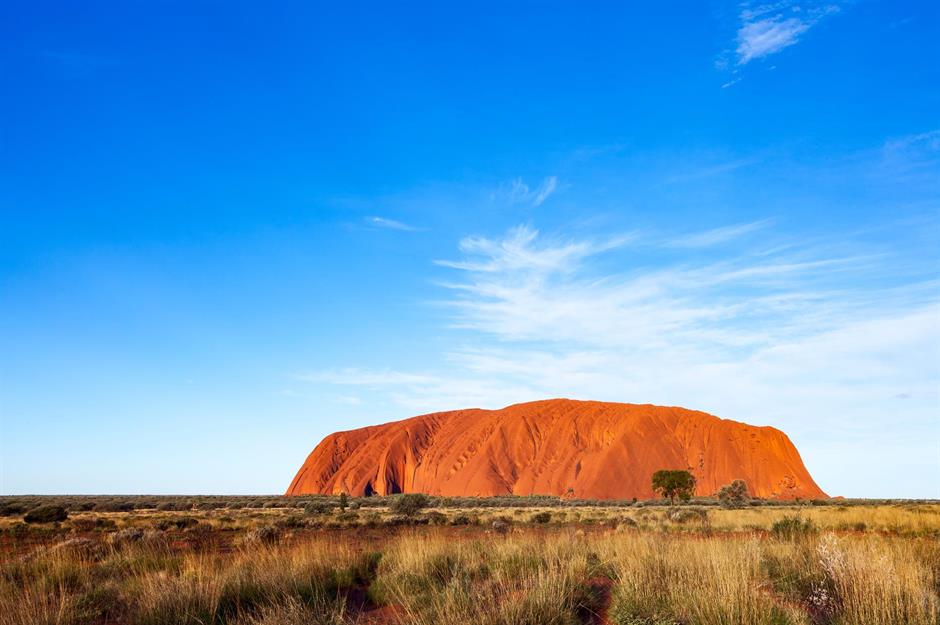
This majestic monolith rises out of the outback's red-sand plains, and is undeniably moving. Its immense scale, beauty and spiritual significance make this a profound and contemplative place, which the Anangu people, its traditional owners, see as a living site. Climbing the rock has been strictly forbidden since 2019. Even Uluru's native wildlife is linked to its creation story: the rufous hare-wallaby is said to embody the spirit of the Mala people, Anangu ancestors who guide their modern-day descendants. Book onto a half-day tour with a local Anangu guide to learn more about this extraordinary environment.
Kakadu National Park, Northern Territory
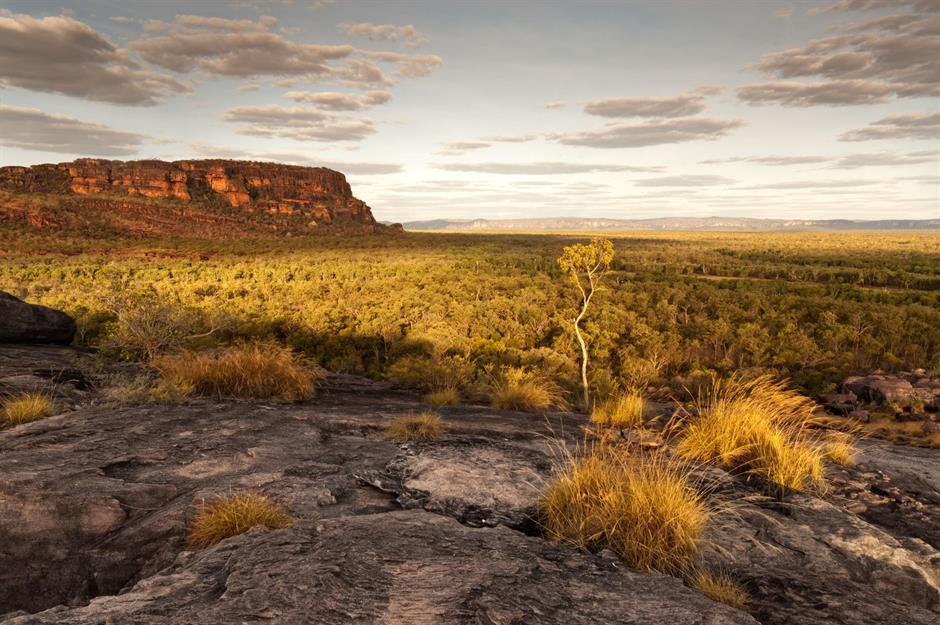
One of Australia’s largest national parks at 7,722 square miles (20,000sq km), Kakadu boasts green floodplains, thundering waterfalls and giant sandstone outcrops decorated with ancient cave paintings. Ubirr and Nourlangie are among the country’s most important rock art sites, some of which are up to 20,000 years old. You’ll see depictions of animals and early contact with European colonisers, as well as distinctive x-ray-style art (skeletal figures), a form that developed around 2000 BC.
Kata Tjuta, Northern Territory
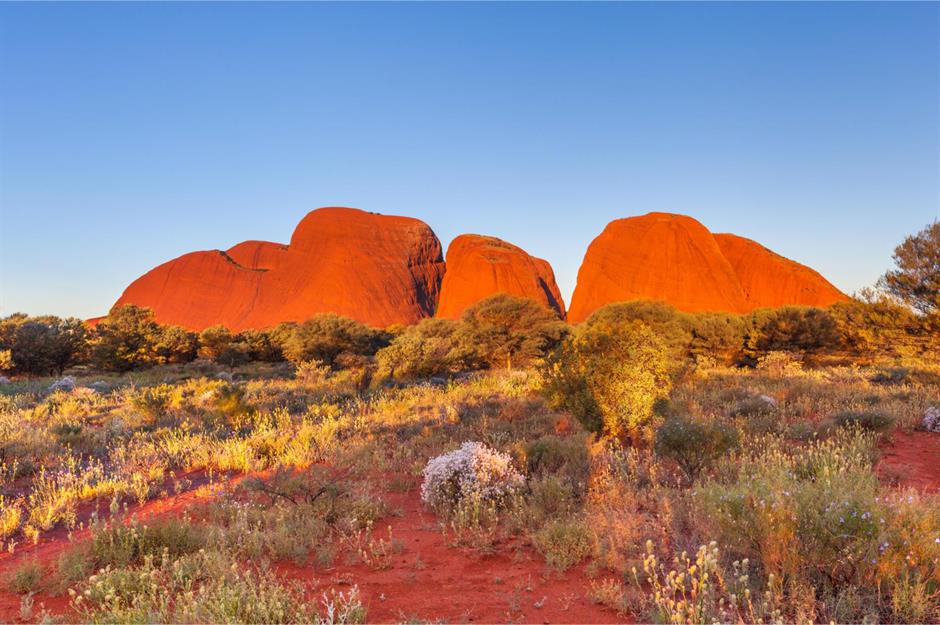
Meaning 'many heads' in the language of the Anangu people, Kata Tjuta lies approximately 31 miles (50km) west of Uluru. Formed of 36 giant rock formations, the site comprises the other major part of the Uluru-Kata Tjuta National Park. You can take a 4.6-mile (7.4km) walk around the Valley of the Winds to see its ancient rocks and gorges, as majestic as they are sacred to the Anangu people.
Wilpena Pound, South Australia

Wilpena Pound may not be as well-known as Uluru, but this mountainous landscape is just as impressive. At eight times Uluru's size the area has a deep spiritual significance, and one of its many sacred spots is a gaping natural ‘amphitheatre’ of mountains in Ikara-Flinders Ranges National Park. Ikara means ‘the meeting place’ to the Adnyamathanha people – and the site is renowned for its geological history, fossils and Aboriginal rock art.
These are Australia's most beautiful small towns and villages
Blue Mountains National Park, New South Wales

Home to the Darug, Gundungurra, Wiradjuri, Wanaruah, Darkinjung and Dharawal Nations, the Blue Mountains weren't penetrated by Europeans until the 19th century. Located to the west of Sydney, the landscape is peppered with outstanding rock art and carvings; the ‘flight of the Great Grey Kangaroo’ is a particularly well-preserved piece near the Hawkesbury Lookout.
Arnhem Land, Northern Territory
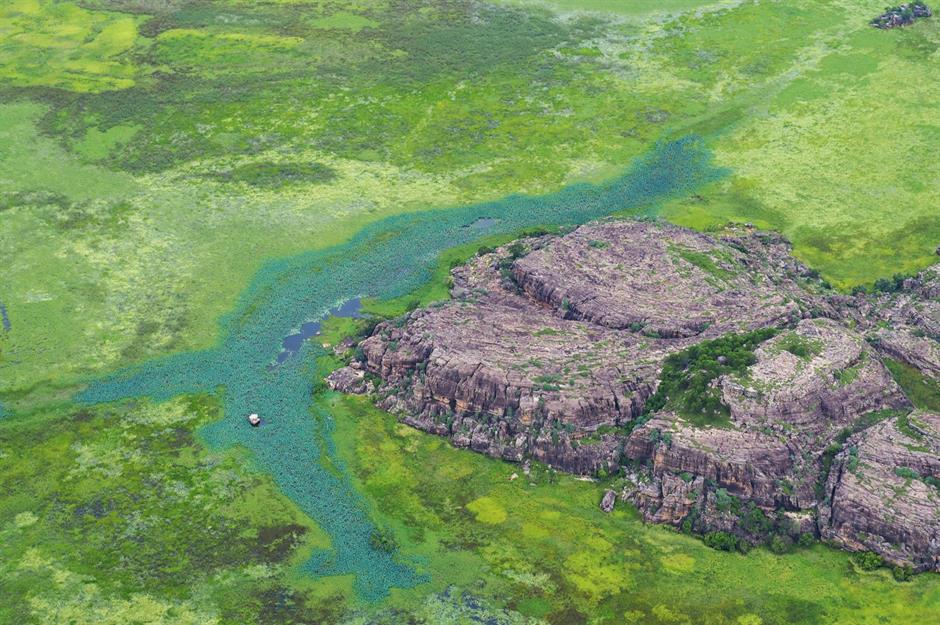
Roughly the same size as Iceland and situated in Australia's far north, Arnhem Land is the traditional home of the Indigenous Yolngu people with a population of around 16,000. The majestic landscape is stuffed with sacred sites and rock art galleries, and is also where the didgeridoo was invented. As Arnhem is Yolngu land you’ll need a permit to visit, but once here you can hike Injalak Hill with an Aboriginal guide or go on a land safari to see the wetlands and experience Yolngu lifestyle.
Garma Festival, Northern Territory
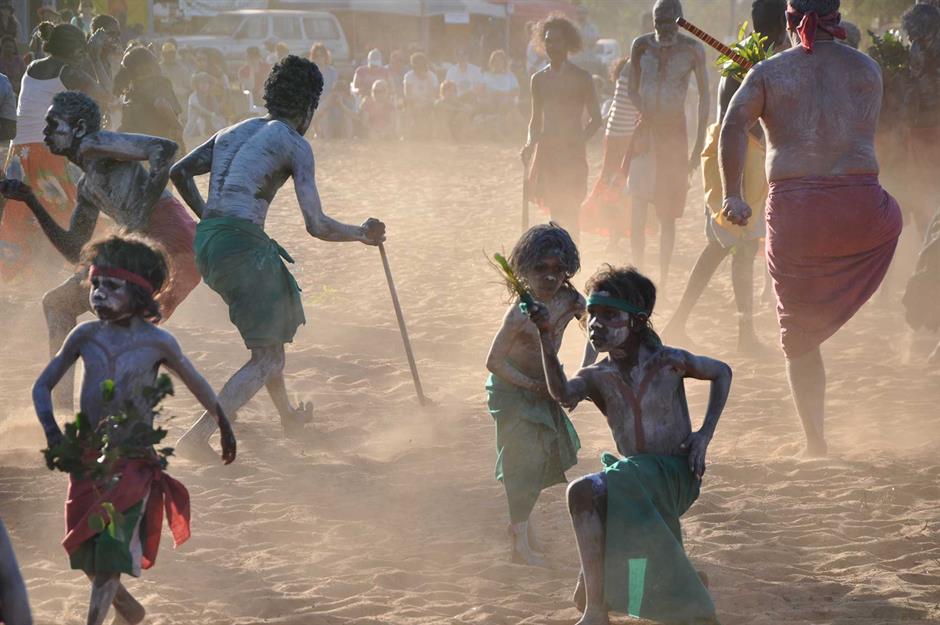
The spectacle of the Garma Festival isn't one to be missed. Held every August, Arnhem Land's Yolngu people display their rich cultural heritage and invite outsiders to participate. The hosts mark the start of the celebrations with a yidaki (didgeridoo) performance before guests experience four days of traditional miny’tji (art), ancient storytelling, manikay (song) and bunggul (dance). Talks and workshops are also held to promote cross-cultural understanding.
Hanging Rock, Victoria
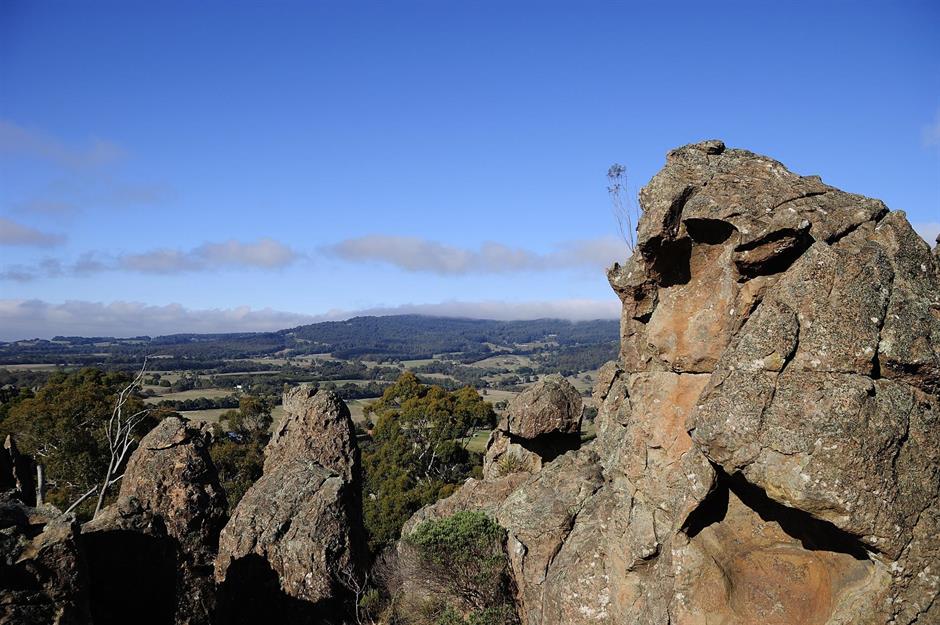
The Dja Dja Wurrung, Woi Wurrung and Taungurung peoples used and occupied Hanging Rock for at least 10,000 years, likely as a space for sacred ceremonies, initiations and other gathering traditions. The jagged outcrop lies in the Macedon Ranges and is peppered with caves, tunnels and overhanging boulders, although the region's traditional owners are said to have avoided its summit, believing it to be inhabited by evil spirits.
Booderee National Park, New South Wales
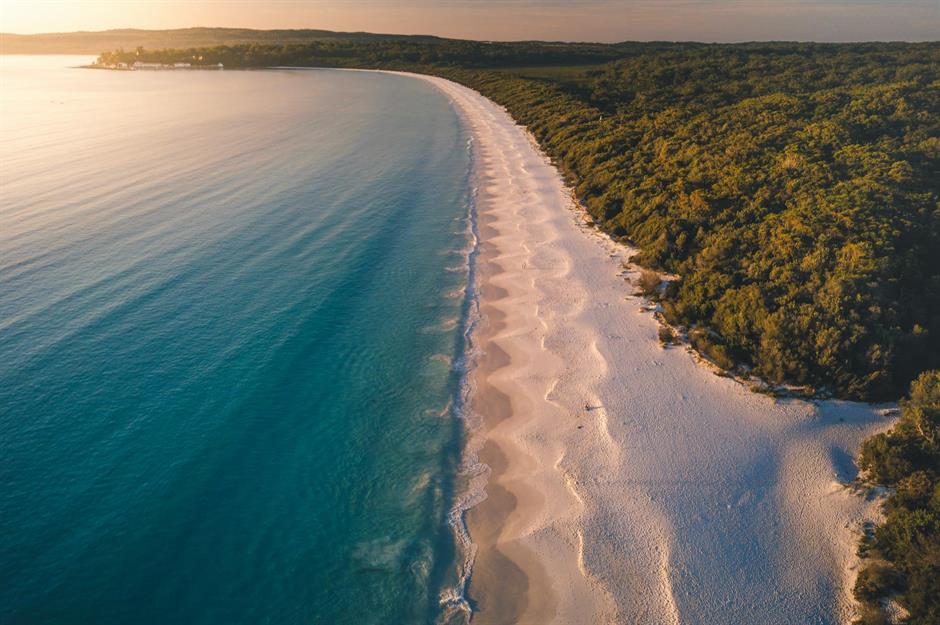
Booderee means ‘bay of plenty’ in the Dhurga language, and Booderee represents the home and the spirit of the Wreck Bay people. The Bherwerre Peninsula has recorded over a hundred traditional Aboriginal homes – some as many as 6,000 years old – along with rock shelters, burial sites, ceremonial grounds and axe-sharpening grooves. Guided tours of Booderee's botanic gardens and park are led by today's Wreck Bay people, who share ancestral stories and their way of life.
Carnarvon National Park, Queensland
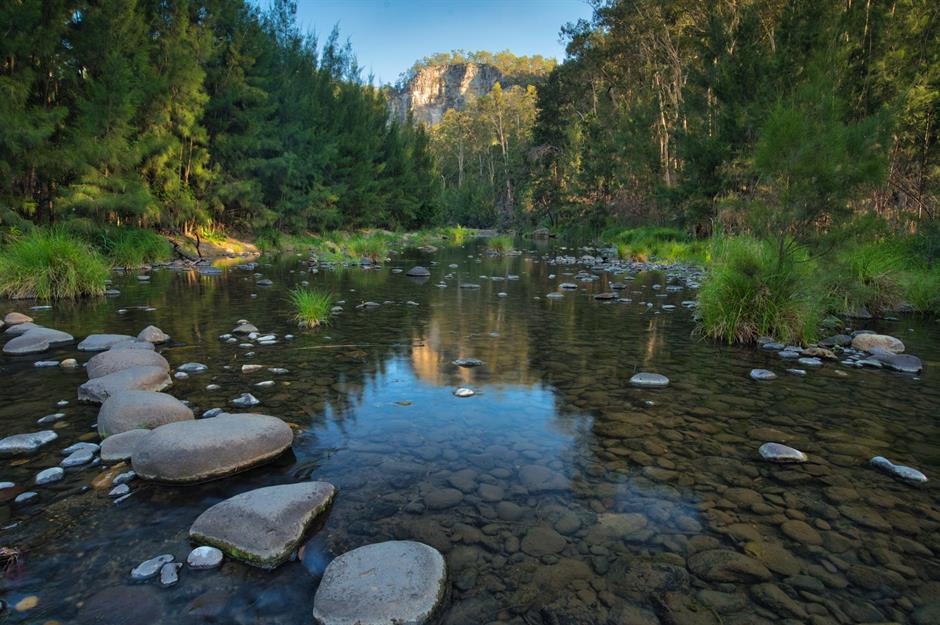
Among Carnarvon National Park’s narrow gorges, boulder-strewn creeks and hulking cliffs lie a string of significant Aboriginal sites. Long ago, the Yinggarda people named this oasis-like area Gwoonwardu, meaning ‘neck of water’. The Art Gallery and Cathedral Cave walks are the best places to see ancient art, with white sandstone walls adorned with paintings, red ochre stencils and engravings spanning from thousands of years to a mere 200 years old.
Daintree Rainforest, Queensland
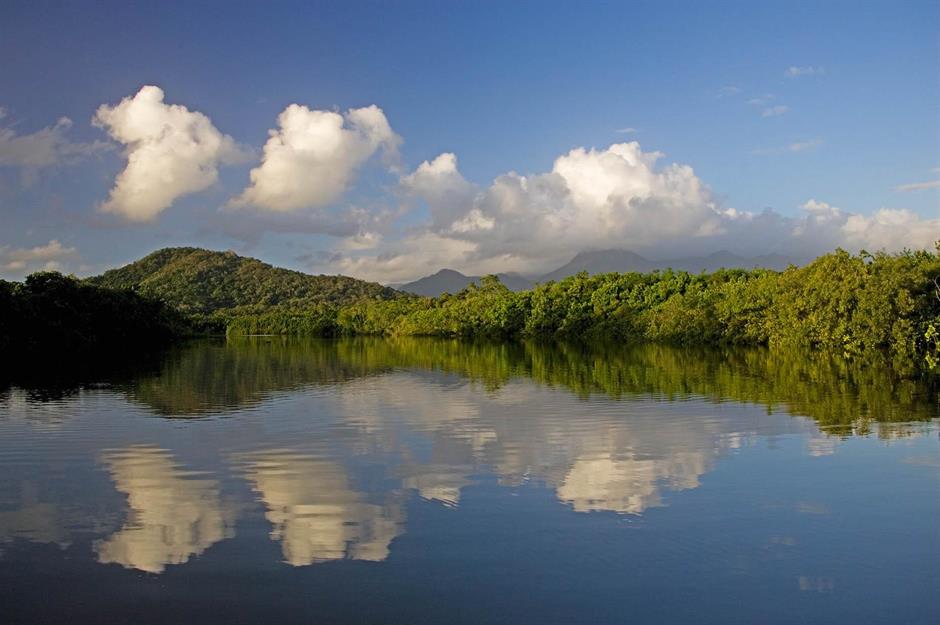
Estimated to be 180 million years old, Daintree is the oldest rainforest in the world. This vast, lush paradise is home to more than 660 animal species, 230 types of butterflies and more than 2,800 types of plants. Make the most of this endlessly enchanting haven by taking a walk with a Kuku Yalanji guide through Mossman Gorge, where you’ll learn about Daintree’s many stories, paint with a local artist and learn about the deep significance of the rainforest to the area’s traditional custodians.
The Blue Hole, Queensland

Deep in the idyllic rainforest of Daintree National Park is the Blue Hole, a sacred pool traditionally exclusively reserved for Kuku Yalanji women. A healing pool and birthing place, local people have erected signs urging visitors to respect the site by not swimming in the water or engaging in behaviour that could damage it, but not all tourists listen. As a result, the Jalunjiwarra clan (an eastern Kuku Yalanji people) are seeking government protection for the Blue Hole.
Quinkan rock art, Queensland

Located in the Laura Basin region, the Kuku Yalanji peoples (including the Ang-Gnarra, the traditional owners of Quinkan Country) created thousands of rock art galleries some 15,000 to 40,000 years ago. You'll marvel at the variety of artistic styles that emerged during this immense period of time, with depictions of stick-like Timara and bigger-bodied Imjin spirit figures, animal totems and the arrival of Europeans. Many of these rock art galleries are inaccessible to the general public, so your best bet is to book onto a tour with an Ang-Gnarra guide.
Laura Quinkan Dance Festival, Queensland
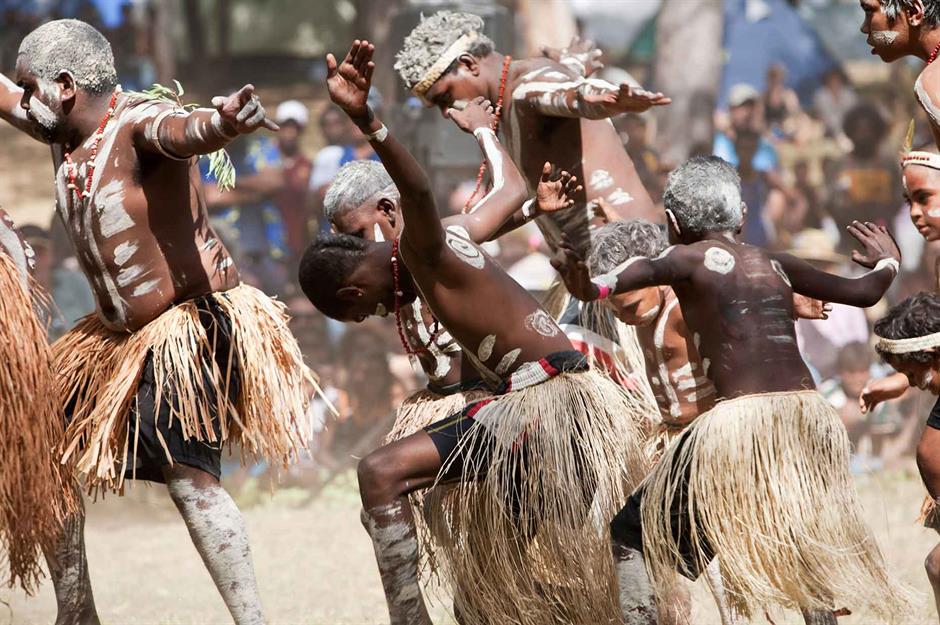
The Laura Quinkan Dance Festival is Queensland’s longest-running Aboriginal event. For centuries, Laura has been the central meeting place for Cape York’s Aboriginal population. The festival is held every two years, and up to 1,000 performers from 20 Indigenous communities (including Torres Strait Islanders) showcase their ancient culture through evocative song and dance performances. There are plenty of craft workshops allowing guests to get hands-on too.
Mount Conner, Northern Territory
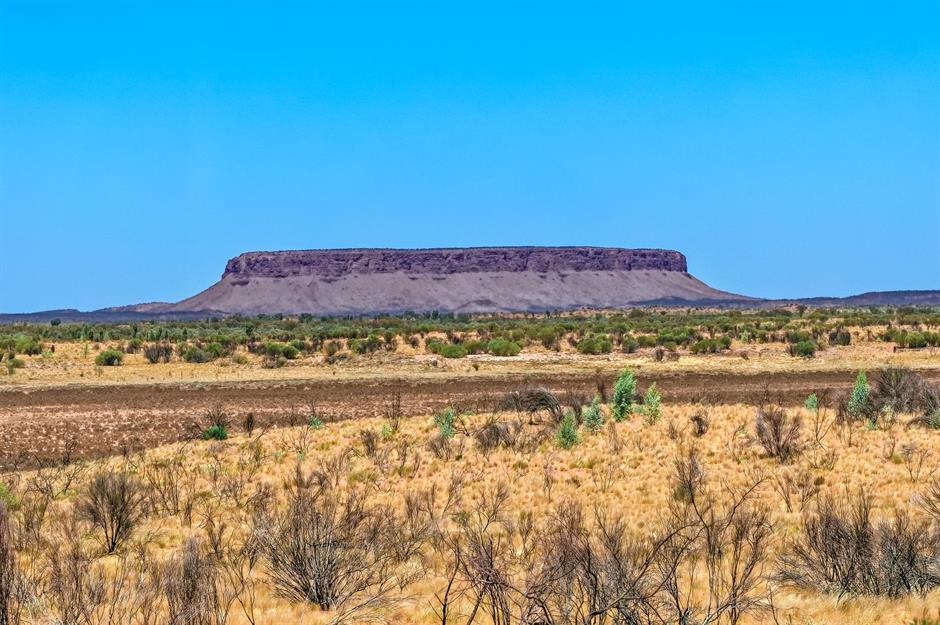
Mount Conner rises dramatically out of the red dirt, much like its better-known counterpart Uluru (it’s even nicknamed 'Fool-uru'). The 984-foot-tall (300m) mesa is known as Artilla by the Pitjantjatjara people, who believe it to be the home of the Ninya (icemen) that create cold weather. This flat-topped sandstone formation once formed part of a mountain range and today lies within the vast Curtin Springs cattle station, so you can only see it from afar or by booking onto a pre-arranged private tour.
Yallingup, Western Australia

Said to mean ‘place of love’ in the Wardandi language (but more likely to mean ‘place of caves’), Yallingup houses cave sites belonging to the Wardandi people and is snuggled beneath a limestone ridge. You can venture inside the Ngilgi Cave – named after a heroic spirit that claimed the cave as his home – and take in the stalagmite, stalactite, helictite and shawl formations.
Fish traps at Brewarrina, New South Wales
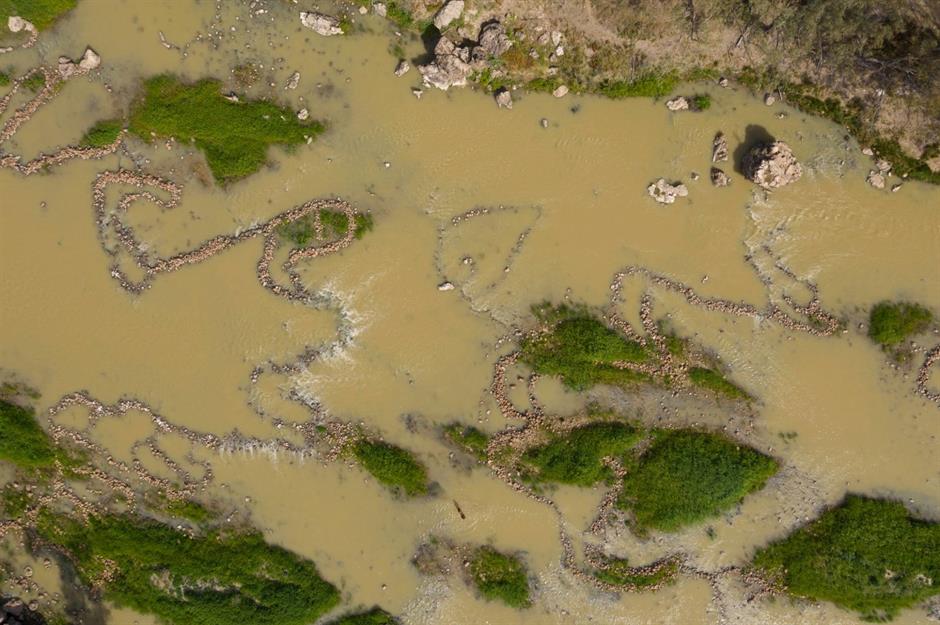
Locals claim Brewarrina’s fish traps are 40,000 years old, which would place them among the oldest man-made structures in the world. The Ngemba people used traps called Ngunnhu to confine freshwater fish in a series of uniquely-shaped pools, which were far easier to fish from. Located in the Barwon River, you can still see the astoundingly ancient stone boundaries of these pools when the water levels are low.
Ochre Pits, Northern Territory

For thousands of years, Aboriginal peoples have used ochre as a raw material for paintings and ceremonial body decoration, to protect wooden weapons from termites, and even in decongestion ointments and magic charms. The Northern Territory's vivid Ochre Pits comprise colourful clay walls displaying earthy reds, oranges, browns, yellows and whites, and provide some of the best-quality pigment in Australia. They’ve been mined for generations and are still a culturally active site, so visitors should avoid touching, using or removing the ochre.
Rainbow Valley, Northern Territory

Wrapped with bands of coloured rock, Rainbow Valley lives up to its English name when the rising sun engulfs the vibrant sandstone bands in multicoloured light. Its traditional owners, the Southern Arrernte people, know the valley as Wurre, and numerous petroglyphs, rock carvings, grinding stones and tools have been discovered around the registered sacred site. Visitors are requested not to remove rocks or take photographs of the area.
Worimi Conservation Lands, New South Wales
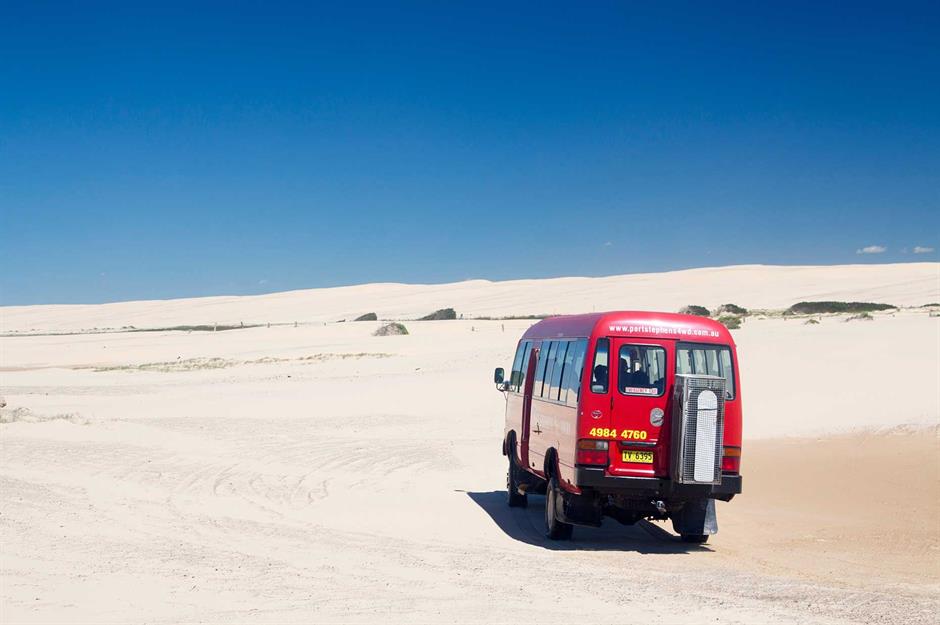
Scattered across the seaside sand dunes of Worimi Conservation Lands are ancient shell middens, campsites and burials. The ancestors of the Worimi people were hunter-gatherers who thrived using nearby ocean and forest to their advantage, spear-fishing for sustenance and building canoes. Although European settlement was devastating for the Worimi, their culture is still preserved here: see the amazing landscape for yourself on a guided tour, where you choose between quad bikes, jeeps, dune safaris (pictured) and more.
Grampians National Park, Victoria
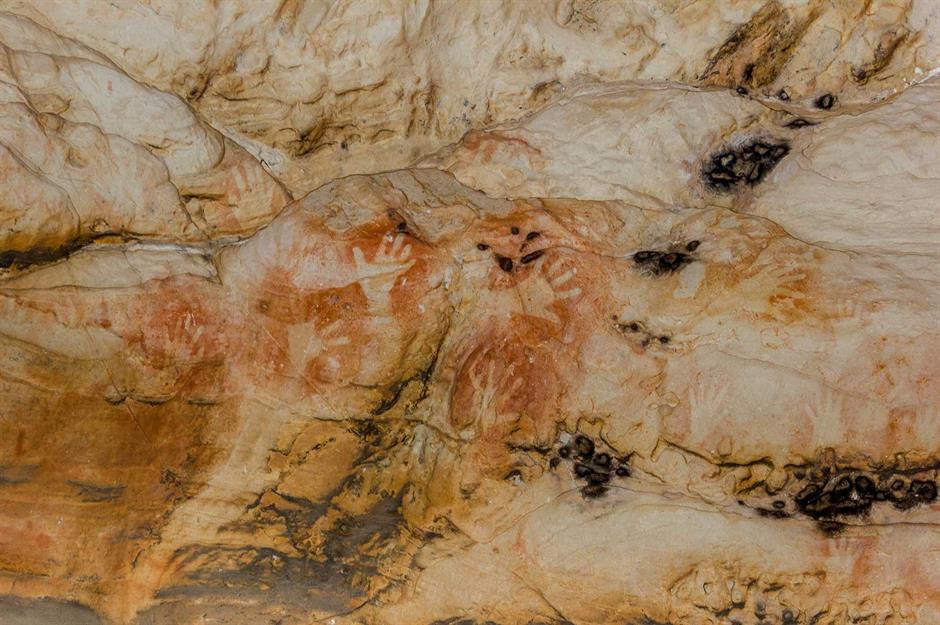
Grampians National Park is popular with experienced walkers and hikers, and also lays claim to the largest number of Aboriginal rock art sites in southern Australia. The region is traditionally known as Gariwerd, and has been home to the Djab Wurrung and Jardwadjali people for 20,000 years. Artefacts and animal tracks have been found here, and you can see handprint stencils made by Jardwadjali children at Gulgurn Manja ('hands of young people'), plus red paintings at Billimina Rock Art Site.
Dance Rites, New South Wales

Since 2015, Aboriginal and Torres Strait Islander peoples have gathered annually in the forecourt of Sydney Opera House for the ultimate dance extravaganza. The event showcases diverse First Nations cultures through dance, skin art and musical instruments, as well as other traditional practices. Each group's performances consist of welcome and farewell dances, as well as a ‘Wildcard’ dance to be in with a chance of bagging the cash prize of up to AUS$20,000 (£11,100). Its iconic location is significant in more ways than one – Australia’s most famous building sits on Bennelong Point, a former island that has been an Aboriginal ritual meeting place for thousands of years.
Comments
Be the first to comment
Do you want to comment on this article? You need to be signed in for this feature
Most Popular
Destinations Incredible recent discoveries from ancient Egypt